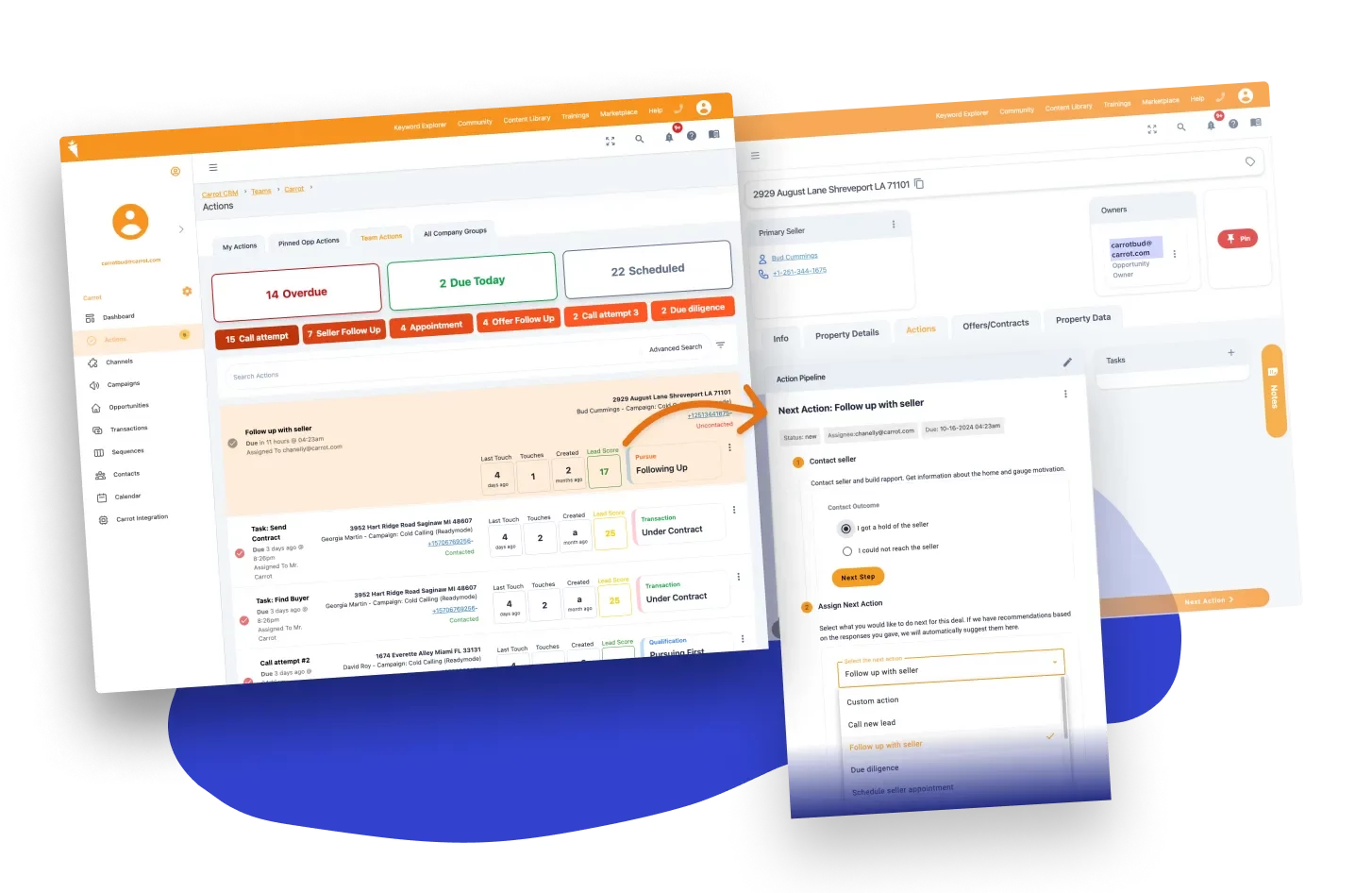Overview
The higher you rank in search engines like Google, the more traffic you’ll get. More website traffic can provide more leads, which means more customers and revenue.
Carrot’s website platform is built with SEO and performance in mind. We offer robust templates and content tools that make it easy to create a site that will rank highly in search. But you’ll still want to make your site uniquely yours and position yourself as the most credible and trustworthy option in your local area.
SEO is a long-term strategy. Before following the steps in this tutorial, make sure that you’ve familiarized yourself with the basics of SEO.
📙 Click here to learn about SEO basics →
Building Brand Credibility
It’s important to remember that SEO and your Carrot website is one piece of your marketing strategy for your business.
The foundational element that will help improve all of your marketing efforts and business success? A memorable and trustworthy BRAND.
What is brand identity?
via Hubspot
“A brand identity is made up of what your brand says, what your values are, how you communicate your product, and what you want people to feel when they interact with your company. Essentially, your brand identity is the personality of your business and a promise to your customers.”
More and more, having a strong brand is an important part of SEO. Recently leaked Google documentation shows that brand matters more than anything else:
“If there was one universal piece of advice I had for marketers seeking to broadly improve their organic search rankings and traffic, it would be: ‘Build a notable, popular, well-recognized brand in your space, outside of Google search.’ “
via Rand Fishkin, Sparktoro
Branding has always been, and continues to be, an important part of marketing your business. Building a strong brand takes time and includes many different elements, but it comes down to this:
- Differentiating yourself from competitors
- Being memorable
- Positioning your business as trustworthy and credible
Learn more about building a credible brand:
- Building Credibility
- Differentiate with Design
- The Ideal “Reviews” Page
- How to Develop a Unique & Memorable Brand, via HubSpot
On-Page SEO + Content Strategy
As you work on improving your Google rankings, the first places we recommend you start are with on-page SEO and content strategy.
Luckily, Carrot’s templates and tools help make this much easier and faster than if you were building a custom website from scratch!
Having helpful, descriptive content on your website is important for getting found by search engines and building trust with website visitors.
On-page SEO is the practice of optimizing elements on your own website for the purpose of ranking high in organic search results. On-page SEO includes updating elements of your website like your content, meta titles, meta description, URLs, internal linking, and images.
Learn more about on-page SEO:
Off-Site SEO
After optimizing your pages and creating some helpful content, you’ll want to spend some time on off-site SEO. This includes everything that is not controlled directly within your website.
Off-site SEO (also known as off-page SEO) primarily consists of building citations and backlinks to your website.
We recommend starting strong by building citations for your business.
After setting up citations, you’ll want to focus on building more relevant backlinks for your business. It’s important to focus on quality and relevance when building backlinks, rather than simply quantity.
📙 Click here to learn about Off-Page SEO and building backlinks →
Improving Your SEO Efforts
Okay… so you’ve had your Carrot website for a while and you’ve done everything above. What next?
Carrot offers tools like our Keyword Rank Tracker, Domain Overview and Backlink Analysis to help you track your SEO performance.
The Analytics dashboard helps you track your website traffic and understand how visitors interact with your site, so you can optimize for better performance. Carrot’s Search Performance feature provides insights into how your website is performing in Google search results, by pulling in data directly from Google Search Console.
You can use insights from these tools to double down on what’s working or look for opportunities to improve low-performing content or build more authority for your website through citations and relevant backlinks.
When making SEO changes, it’s important to note that it takes time for Google to index any new pages or changes to existing pages. Give it a few weeks after making changes to your site before re-evaluating your rankings.
It may be tempting to check your Keyword Rank Tracker or Backlink Analysis daily, but we recommend setting some time aside once or twice a month to review your rankings and make any adjustments to your content and SEO strategy.
Learn more about ongoing SEO improvements:
- How to Interpret and Use Analytics Data
- How To Use The Backlink Analysis Tool
- SEO Keyword Rank Tracking Tool
- How To Use and Understand Our Search Performance (Google Search Console) Feature
Here are a few more tips to continue improving your SEO:
Double down on what’s working
If you notice a particular page or blog post bringing in a lot of traffic, look for opportunities to drive even more traffic to it or add more useful information.
For example, for a text-only blog post that is getting traffic, you might want to record a video for YouTube about the same topic and embed that video in your blog post. Turn it into a VideoPost and be sure to link back to the blog post from your video’s description on YouTube.
You can also do a Google search for your topic – what is currently ranking above you for your primary keyword phrase? What are the top-ranking results doing better than you? Are there opportunities for you to improve your content?
Keep an eye out for keyword cannibalization
This happens when multiple pages on the same website compete with each other for the same keywords, which can confuse search engines and users alike. Learn more about how to spot keyword cannibalization and what to do about it.
Seek more opportunities for brand awareness
Many of our customers ask us about the best way to build backlinks. Rather than focusing on quick fixes like buying backlinks (which can potentially have negative impacts long-term if done incorrectly), we recommend building awareness for your brand overall. This might include running Google PPC ads or Facebook Ads, seeking out press and publicity for your business, or developing a social media strategy.
What To Do While Doing SEO
SEO takes time, and it’s a process. If you’re looking for faster options to get leads quickly, we’ll cover those in the next section. Great options are Facebook or Google Pay Per Click (PPC). But let’s be clear: you should do both SEO and paid marketing to have the best performance for your site.
Remember to be consistent with this and ensure you have time allotted for SEO during your workweek, even if it’s checking in with someone you’ve paid to help with SEO.
An SEO Expert’s Proven Process to Rank #1 w/ Nathan Gotch
At Carrot Summit 2024, we had the chance to talk with one of the leading experts in SEO – Nathan Gotch.
He walked us through his process for keyword research, how to prioritize your SEO efforts, how to stand out as the SEO landscape changes, and more pro tips. Watch the recording:
Learn more about marketing your business:
- Crafting A Winning Marketing Plan
- Lead Generation Strategies That Can Change The Way You Do Business
- Join Carrot’s Official Evergreen Marketing Community on Facebook!
Close More Deals
with Carrot CRM

Grow your revenue and turn more leads into closed
deals with Carrot’s built-in CRM.
Premium Support
& 1:1 Strategy Calls

Members with our Premium Support Add-On can book
a 1:1 video calls for tech questions & strategic advice.

